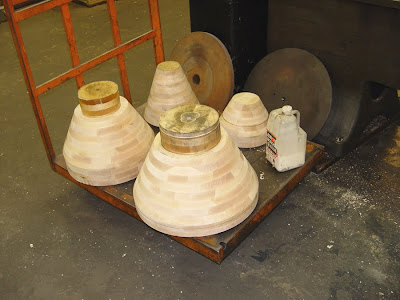After approval by the cities engineer, we began adding extensions to the rear of the frames that will used to anchor the sculpture to the parking garage structure. As shown in renderings in an earlier post, the sculpture is mounted over a long horizontal opening on the 3rd floor of the parking garage. The above drawing shows construction and installation details for the new site.
The extensions or legs that are being added to the rear of the frames are constructed much like the rest of the frames. A spacer is welded inside the square tube to keep the tube from collapsing when the concrete anchors are tightened.
The frames that are smaller than the opening in the parking garage have three legs at the bottom with two concrete anchors per leg.
The frames that are larger than the opening have four legs. Two at the top and two at the bottom. These only use a single concrete anchor in each leg.
Detail photos showing triangular gussets that were added for strength. The piece of angle iron that is welded to the leg serves as positioning stop that will space the frames two inches off of the concrete wall.

































































